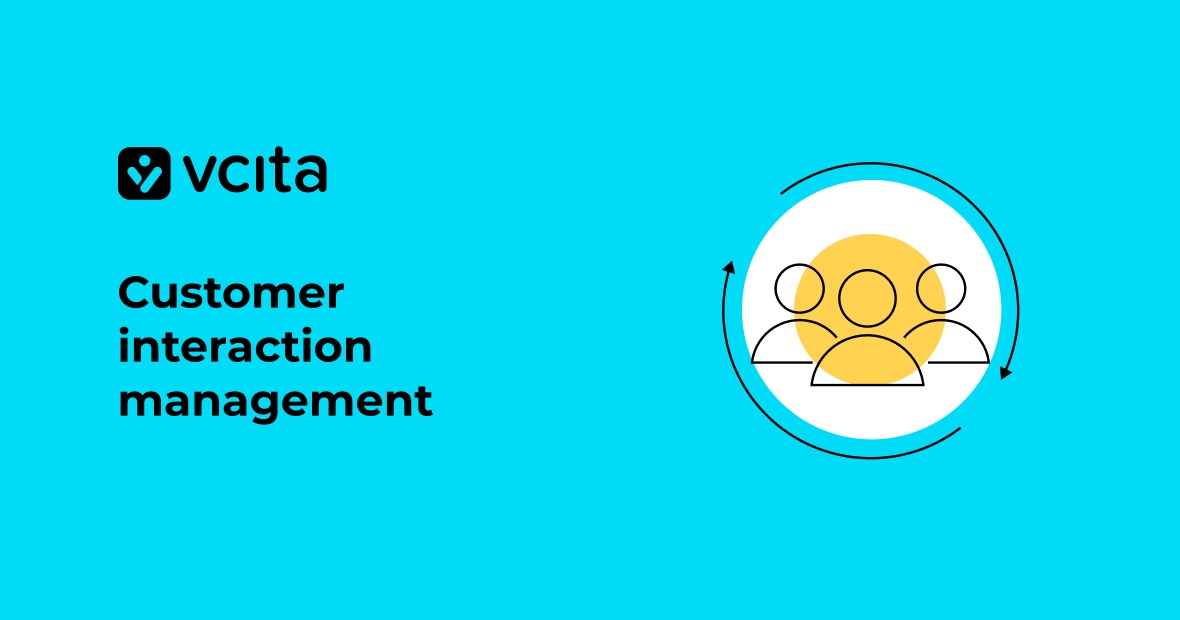Hey there, small business owner. Do you ever feel like you’re not maximizing the potential of your existing customers? You could change that, build a loyal customer base, and strengthen customer retention with customer interaction management.
Customer interaction management allows you to gain deep insights into your customers’ journeys, pain points, and preferences so you can provide the personalized experience they crave. The end result? Higher customer loyalty, increased customer engagement, and a bigger, happier customer base.
Customer interaction management summary
- Customer interaction management involves tracking how customers interact with your business across channels to gain insights into their needs and pain points.
- It allows you to provide a personalized experience that increases customer loyalty, engagement and retention.
- Closely monitoring the customer journey and experience at each touchpoint provides valuable insights to improve products, services and processes.
- Collecting customer data through tools like live chat, surveys and software helps identify issues and opportunities to improve the customer experience.
- Utilizing real-time communication channels like live chat allows you to resolve issues quickly, build relationships and gain customer insights.
- Delivering exceptional customer support through resolving issues quickly and establishing trust strengthens customer relationships and retention.
- Optimizing the customer interaction cycle by making interactions effortless, being proactive, getting personal and resolving issues the first time improves loyalty and customer satisfaction.
Using customer interaction management to understand your customers’ needs
As a small business owner, you know that acquiring new customers is difficult and expensive. The key to growth is keeping the customers you already have. This is where customer interaction management comes in. It’s a methodology that involves managing all conversations with your existing customers across all communication channels, including phone, email, live chat, and social media.
By closely monitoring how your customers feel and interact with your business at each stage of their journey, you gain valuable insight into their needs and expectations. This allows you to anticipate problems, address issues in real time, and make improvements to provide a personalized experience.
The customer interaction management process includes:
- Tracking how customers interact with your business, to identify their needs and pain points.
- Paying attention to your customers’ tone and sentiment. Are they frustrated or delighted?
- Capturing feedback through surveys and live chat to better understand your customers’ needs.
- Analyzing your customer data and interaction cycle to determine where customers may be at risk of leaving.
When you focus on customer interaction management, you gain insight into your customers’ needs and can provide the support they want. Once you have these insights, you can make targeted improvements to your products, services, and processes to boost customer engagement and loyalty. This leads to higher customer retention, a larger loyal customer base, and a growing business.
Streamlining the customer interaction cycle
An effective customer interaction management strategy streamlines the customer interaction cycle. This means:
- Mapping your customers’ journey from first contact to purchase and beyond.
- Identifying key interactions that build customer engagement and loyalty.
- Using customer data to anticipate needs and resolve issues quickly.
- Empowering your support team with a 360-degree view of each customer relationship.
With customer interaction management, you can turn new customers into lifelong advocates and boost customer retention. By personalizing each stage of your customers’ journey in real time, you demonstrate how much you value them and their business. This kind of personalized experience is what turns customers into loyal fans, and fuels the growth of any small company.
Keeping track of customer data to improve customer experience
Customer interaction management means closely tracking your customers’ experiences, needs, and pain points at every stage of their journey with your company. Use tools like live chat, customer support software, and post-interaction surveys to capture feedback in real time across all your communication channels. Then look for trends in the questions they ask, comments they make, and problems they report.
Collecting customer data responsibly and with consent allows you to identify your most loyal customers and tailor personalized experiences for your entire customer base. For example, you may discover that customers who use your live chat feature feel more supported and stay longer. You can then optimize resources to improve live chat response times.
Focus on identifying your customers’ major pain points and concerns so you can address them proactively. Pay close attention to your customers’ journeys and interactions with your business to gain insight into how they feel and what they need. By understanding your customers’ experiences in real time across communication channels like live chat, email, and phone, you can gain insights into how to better serve them.
Utilizing communication channels for real-time engagement
Live chat connects your customers with an actual human support representative, enabling them to get answers to their questions right away. It’s a fast, convenient way for visitors to contact you with a single click. By implementing live chat on your website, you can resolve issues more efficiently, improving customer experience and building loyalty.
Using live chat, you can:
- Resolve customer queries and concerns immediately. By addressing questions in real time, you make your customers feel heard and supported.
- Build rapport and strengthen customer relationships. Live chat allows for personalized interactions where your support team can make meaningful connections.
- Gain valuable customer data and insights. The conversations from live chat provide information about your customers’ needs, interests, and journey that you can use to improve their experience.
- Increase customer retention and loyalty. By providing quick, personalized support, you give customers a reason to keep coming back and remain part of your customer base.
- Boost customer engagement. Live chat makes it easy for visitors to reach out, so they feel more engaged with your business. An engaged customer is more likely to make a purchase or become a loyal, long-term customer.
To get the most from live chat, you should:
- Make well-trained support reps available during your business hours
- Monitor chat metrics like response times, satisfaction scores and common questions
- Continually improve customer interactions
By focusing on real-time engagement through live chat and your other communication channels, you’ll build meaningful relationships and a community of devoted customers.
Building strong customer relationships through outstanding support
Delivering exceptional customer support is key to keeping hold of your existing customers. Your support team should aim to resolve issues and answer questions as quickly and helpfully as possible. Fast, caring, and effective support builds customer loyalty, boosts retention, and turns customers into enthusiastic advocates for your business.
Use your CRM to track each customer’s journey, record details of interactions, and gain valuable insights into your customer base. Then look for opportunities to strengthen customer relationships over the long term.
Your CRM can point out ways to personalize your customers’ experiences at multiple touch points, based on their unique needs and behaviors. The more you can customize and tailor your outreach and support, the more your customers will appreciate your business.
Optimizing the customer interaction cycle to increase loyalty and retention
The customer interaction cycle is the ongoing process through which businesses engage with their customers. It typically involves several stages, including customer interactions; customer transactions like making a purchase or booking an appointment; feedback from the customer about their experience; and then improving the whole process. This cycle is essential for fostering positive relationships, gathering insights, and improving overall customer satisfaction and loyalty.
To optimize the customer interaction cycle and maximize customer loyalty and retention, focus on:
- Making interactions effortless and quick. Minimize the number of clicks, forms and wait times customers face when contacting you, make it easy for them to find the information they need, and reduce friction at every point.
- Being proactive, not just reactive. Reach out to customers before issues arise to check in, remind them of value and see how you can help them.
- Getting personal. Use past interactions and customer data to personalize outreach and support. Show customers you know and understand their unique needs.
- Resolving issues the first time. Thoroughly research customer issues and keep customers updated on progress. Leave no loose ends. The faster you respond, the more value customers perceive.
- Following up. After interactions, check in with customers to ensure the issue remains resolved and their needs continue to be met. Say thank you.
- Seeking feedback. Regularly survey customers to understand how to improve processes, products and the overall experience. Listen carefully to feedback.
- Acting on insights. Analyze customer data and feedback to identify actionable changes that will enhance the experience at each stage of the interaction cycle.
Show customers you value them by delivering an exceptional experience at every touchpoint – from product information and ordering, to shipping, support, and follow-up. The more effort you put into understanding and fulfilling customer needs, the more loyal and satisfied your customers will be.
Strong customer interaction management can bring long-term business success
Ultimately, keeping your customers happy and loyal is much less expensive than constantly having to attract new customers. Focus on delivering value, building trust, and nurturing lasting relationships through great customer experience. Customer interaction management, especially highly responsive and personalized support, is the key to customer retention and long term success.




























